I am trying to learn more about Entity Framework Core. Unforunately it appears to mandate a junction class when you create a many to many relationship. Please see the class structure below:
Person
Sport
PersonSport
A person has many Sports and a Sport has many Persons. When using EF I would put a Sport collection in the Person class and a Person collection in the Sport class. However, now I have to create the PersonSport class. Please see the API Controller below (this is the only code needed to replicate the problem):
namespace WebApplication1.Controllers
{
[Route("api/[controller]")]
[ApiController]
public class PersonController : Controller
{
[Route("")]
[ProducesResponseType(typeof(Person), (int)HttpStatusCode.OK)]
//[ProducesResponseType(typeof(IEnumerable<Sport>), (int)HttpStatusCode.OK)]
[HttpGet]
public async Task<IActionResult> GetPerson()
{
Person p1 = new Person { Id = Guid.NewGuid() };
Sport s1 = new Sport { Id = Guid.NewGuid(), Description = "Football" };
Sport s2 = new Sport { Id = Guid.NewGuid(), Description = "Running" };
PersonSport ps1 = new PersonSport { Person = p1, PersonId = p1.Id, Sport = s1, SportId = s1.Id };
PersonSport ps2 = new PersonSport { Person = p1, PersonId = p1.Id, Sport = s2, SportId = s2.Id };
List<PersonSport> personSports = new List<PersonSport>();
personSports.Add(ps1);
personSports.Add(ps2);
p1.AssignSports(personSports);
return Ok(p1);
}
}
public class Entity
{
public Guid Id { get; set; }
}
public class Person : Entity
{
private readonly List<PersonSport> _personSports;
public IReadOnlyCollection<PersonSport> PersonSports => _personSports.AsReadOnly();
//public Guid Id { get; set; }
public Person()
{
_personSports = new List<PersonSport>();
}
public void AssignSports(IEnumerable<PersonSport> personSports)
{
this._personSports.AddRange(personSports);
}
}
public class Sport : Entity
{
//public Guid Id { get; set; }
public string Description { get; set; }
}
public class PersonSport
{
public Person Person { get; set; }
public Sport Sport { get; set; }
public Guid PersonId { get; set; }
public Guid SportId { get; set; }
}
}
I debug the Web API project and navigate to: http://localhost:57320/api/Person and see this:
Notice the JSON is malformed. If I try to consume the Web API from a console app/unit test app; I see this error:
System.IO.IOException: Unable to read data from the transport connection: An existing connection was forcibly closed by the remote host. ---> System.Net.Sockets.SocketException: An existing connection was forcibly closed by the remote host
--- End of inner exception stack trace ---
at System.Net.Sockets.Socket.AwaitableSocketAsyncEventArgs.ThrowException(SocketError error)
at System.Net.Sockets.Socket.AwaitableSocketAsyncEventArgs.GetResult(Int16 token)
at System.Net.Http.HttpConnection.FillAsync()
at System.Net.Http.HttpConnection.ChunkedEncodingReadStream.CopyToAsyncCore(Stream destination, CancellationToken cancellationToken)
at System.Net.Http.HttpClient.GetStringAsyncCore(Task`1 getTask)
at ConsoleApp1.Program.CallWebAPI()
How can I resolve this? The code I am using the consume the Web API is as follows:
HttpClient enquiryClient = new HttpClient();
var responseString = await enquiryClient.GetStringAsync("http://localhost:57320/api/Person");
var response = JsonConvert.DeserializeObject<Person>(responseString);
